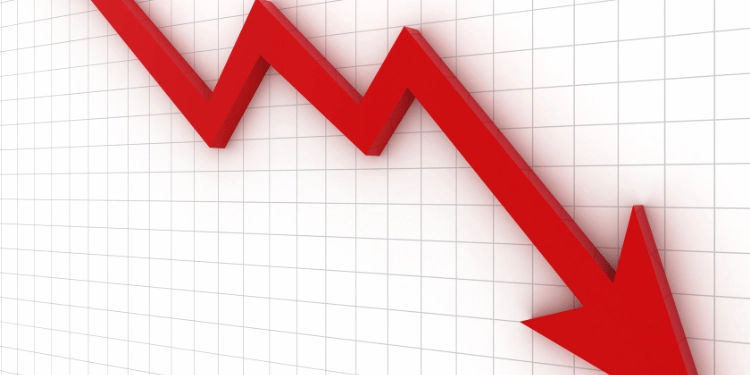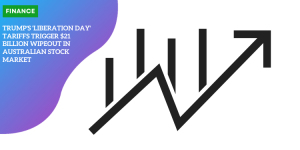Australian Dollar Hits 5-Year Low: What This Means for Your Household Budget
Current State of the Australian Dollar
Australia finds itself grappling with a weakening currency as the Australian dollar plummets to 62 US cents.
This is the lowest point it has hit since March 2020, a notable deterioration that has significant implications for the economy and consumer behavior.
The decline has not been limited to the US dollar; the Aussie has also slid by 3% against the euro and 7% against the British pound.
Decline Against Major Currencies
The Australian dollar’s slump is particularly alarming when viewed against its historical performance against major global currencies.
An 8% drop against the US dollar is worrisome, further compounded by the euro and pound declines.
This paints a picture of a currency struggling on the international stage, deprived of its former stability and purchasing power.
This drop also sends ripples through import-reliant Australia, inflating prices for overseas goods and services.
While the Australian dollar has weakened against these major currencies, it has surprisingly held its own against others.
The Aussie maintains a robust performance against the Japanese Yen, the New Zealand Dollar, and by extension, places like the Cook Islands that use the Kiwi currency.
Moreover, the dollar is doing well in South America, with a particularly strong standing in Argentina.
his diverse performance signals a mixed regional impact balancing some of the adverse effects felt domestically.
Implications of the Decline
The effects of the Australian dollar’s decline are far-reaching and multifaceted.
A weak currency generally makes imports more expensive.
For Australian consumers, this escalation in costs extends to a broad array of goods, including electronics, clothing, and even some food items.
From a broader economic perspective, the Reserve Bank of Australia (RBA) faces a complex challenge.
The depreciation of the dollar creates upward pressures on prices, affecting overall inflation.
This scenario demands careful consideration from RBA Governor Michelle Bullock and her team.
They must weigh the implications of the weaker currency on interest rate policies, balancing efforts to stimulate the economy without further devaluing the dollar.

Australia will have a complex challenge
Economic Outlook
Despite the hurdles, some sectors may find silver linings.
A weaker dollar can make Australian exports more competitive internationally, as goods become more affordable for foreign consumers.
This could benefit Australian producers looking to boost overseas sales.
However, the overall balance between the advantages of competitive exports and the disadvantages of costly imports remains delicate and dynamic.
Though the current situation presents numerous challenges, understanding these multifaceted impacts is key to navigating the economic landscape.
The Australian economy’s reaction to these currency fluctuations will be critical in shaping both consumer behaviors and the strategies of policymakers.
Impact on Consumer Costs
Higher Prices for Imported Goods
A critical consequence of the Australian dollar hitting a low of 62 US cents is the surge in prices for imported goods.
This decline has led to an increase in household expenses, as products like electronics, clothing, and even some food items that are brought into the country from overseas now cost much more.
This presents a significant challenge for Australian households, many of which are already feeling the pinch from rising living costs.
Whenever the Australian dollar weakens, importing goods becomes more expensive.
This is because more Australian dollars are required to buy the same amount of foreign currency to pay for these goods.
As a result, the higher costs are often passed on to consumers, resulting in inflated prices on store shelves.
Therefore, Australians need to brace for a broader budget impact that affects everyday purchases.
Increased Costs for International Travel
For those planning to travel abroad, the news isn’t any better.
The weaker Australian dollar has increased the cost of international travel to popular destinations such as the US, Europe, and the UK.
This means that everything from plane tickets to hotel stays and dining out will be more expensive for Australian tourists in these regions.
For instance, a trip to the US will now demand more Australian dollars to cover the same expenses in US dollars.
Similarly, traveling to Europe or the UK will strain travel budgets, making vacations or business trips more costly.
Many Australians may have to reconsider their travel plans or seek out destinations where their currency goes further.
Favorable Conditions for Travel to Japan, New Zealand, and South America
However, it’s not all doom and gloom when it comes to travel.
The Australian dollar is relatively strong against currencies like the Japanese yen and the New Zealand dollar, as well as in parts of South America, particularly Argentina.
For Australians, this means that travel to these regions remains more affordable and, in some cases, even cheaper than it was previously.
A vacation to Japan, for example, will offer better value for money compared to trips to the US or Europe.
Similarly, New Zealand and South American countries provide opportunities for Australians to enjoy international travel without the steep costs associated with regions where the Australian dollar is weaker.
This can be an excellent time to explore these destinations while taking advantage of the favorable exchange rates.
Navigating the Impact
As households navigate these changes, it’s crucial to stay informed and adjust budgets accordingly.
While the weaker Australian dollar increases costs for imported goods and travel to certain destinations, it also opens up opportunities for exploring more cost-effective travel options.
Overall, understanding the nuances of how the weaker Australian dollar impacts various aspects of consumer costs will help Australians make more informed financial decisions and navigate the current economic landscape more effectively.
Economic Benefits and Trade-offs
A weaker Australian dollar, such as the recent dip to 62 US cents, undoubtedly has significant consequences across various economic dimensions.
While the high costs of imported goods can strain household budgets, this scenario brings a silver lining for Australian exporters.
Australian Exports: Boosting Competitiveness
When the value of the Australian dollar declines, Australian products become less expensive for international buyers.
This shift increases the competitiveness of Australian goods in foreign markets.
For instance, Australian wine, beef, and minerals—which are popular exports—become more affordable to international consumers.
As a result, Australian exporters might see a surge in demand, allowing them to capture a bigger market share globally.
Countries purchasing Australian goods benefit from the favorable exchange rate, making it an opportune time for them to increase their imports.
This can also mean long-term contracts and relationships solidified if Australia’s currency remains relatively weak, translating to a consistent and predictable demand for Australian products.
Producers Reap the Rewards
Australian producers enjoy direct benefits from this increased demand.
With more affordable prices on the global market, Australian companies can ramp up production, creating more jobs and potentially leading to economic growth within the country.
Higher sales volumes overseas can also generate increased revenue for businesses despite the lower profit margins due to the weaker dollar.
A robust export market can lead to greater investments by companies in their domestic operations.
This revitalizes industries reliant on exports, making them more resilient and productive.
Thus, sectors including agriculture, mining, and manufacturing could witness substantial gains, giving a much-needed boost to the Australian economy amidst currency fluctuations.
Striking a Balance between Exports and Imports
However, there is a complex balance to be managed between the advantages of stronger exports and the inherent increases in the costs of imports.
While exported goods become cheaper internationally, imported goods like electronics, machinery, and consumer items rise in price.
This balance poses a challenge for companies that rely on foreign materials or components for their production processes.
Businesses need to carefully manage their operations to maximize the benefits of boosted export sales while mitigating the higher import expenses.
This could mean finding alternative suppliers, adjusting pricing strategies, or even absorbing some costs to maintain competitive pricing for consumers.
Additionally, for the Reserve Bank of Australia (RBA), managing these dynamics involves intricate decisions around monetary policy to stabilize the economy.
They must weigh the benefits to exporters against the inflationary pressures that higher import costs can bring domestically.
A weaker dollar indeed creates a complex economic environment, balancing competitive advantages for exports against potential inflationary pressures from more expensive imports.
Understanding and navigating these trade-offs is essential for both businesses and policymakers.
Reserve Bank’s Considerations
The recent dip of the Australian dollar to 62 US cents, its lowest level since March 2020, is presenting significant challenges for the Reserve Bank of Australia (RBA).
This decline has a multifaceted impact on the economy, influencing consumer prices and the courses of monetary policy.
Inflation Concerns
A weaker Australian dollar inevitably results in higher costs for imported goods.
These increased prices for imports range from everyday items like electronics to essential commodities, exerting an upward pressure on inflation.
For an economy that relies heavily on imports, this scenario creates a snowballing effect where the cost of living escalates, putting additional strain on household budgets.
Interest Rate Decisions
One crucial role of the RBA is to manage inflation through monetary policy, primarily using interest rates.
When the Australian dollar is weak, the RBA faces a conundrum.
Lowering interest rates could stimulate the economy by making borrowing cheaper, but it might also further devalue the dollar, exacerbating inflationary pressures.
On the other hand, maintaining or raising interest rates could strengthen the dollar but potentially stifle economic growth.
This delicate balancing act necessitates thoughtful and strategic decision-making by RBA Governor Michelle Bullock.
She and her team must consider numerous factors, including the current economic conditions, inflation trends, and global economic influences, to determine the most appropriate monetary policy measures.
The Governor’s Challenge
Governor Michelle Bullock’s position is particularly challenging given the current environment.
The dual pressures of supporting economic growth while managing inflation require a nuanced approach.
Bullock must weigh the benefits of a weaker dollar for exporters against the disadvantages for consumers facing higher prices for imports.
Additionally, any shift in interest rates will have broad implications, potentially influencing everything from mortgage rates to business investments.
Bullock’s strategy will likely involve a careful monitoring of inflation indicators and a readiness to adjust policies as economic conditions evolve.
The objective is to strike a balance that supports economic stability without igniting a surge in consumer prices.
This scenario underscores the interconnectedness of currency value, consumer pricing, and fiscal policy, highlighting the complexity of the Reserve Bank’s role in navigating these economic waters.
As the RBA continues to deliberate on its policy direction, the implications of these decisions will ripple throughout the economy, affecting businesses, consumers, and the broader market.
Maintaining awareness of these developments and their impacts can help individuals and businesses make informed decisions in this fluid economic landscape.
To better understand the broader economic conditions affecting the Reserve Bank’s decisions, we’ll next explore the current state of the Australian dollar and its impact on various sectors.
Keep reading to stay informed on these critical economic trends.







